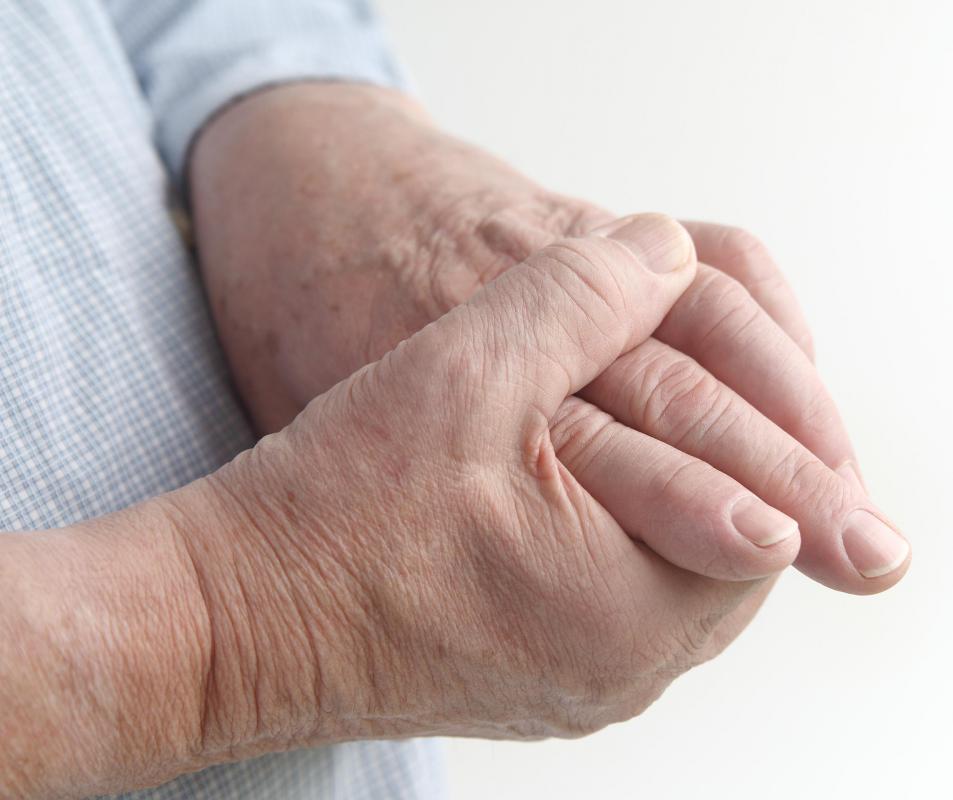At WiseGEEK, we're committed to delivering accurate, trustworthy information. Our expert-authored content is rigorously fact-checked and sourced from credible authorities. Discover how we uphold the highest standards in providing you with reliable knowledge.
What is Degenerative Joint Disease?
Degenerative joint disease is an umbrella term for conditions leading to the deterioration of joint cartilage. Synonymous with osteoarthritis (OA), it can be brought on by such conditions as trauma to the afflicted joint, developmental disorders in which the disks in the joint never fully formed or did not form properly, or hereditary conditions. Whatever the cause, degenerative joint disease typically presents with localized or radiating pain at the joint, tenderness, stiffness, and difficulty in movement. It is a major cause of disability, common in older adults. While it cannot be cured, it can be treated with a combination of chiropractic and physical therapy, the avoidance of movements or behaviors that cause pain, and pain-relieving medication.
Osteoarthritis can affect many of the movable joints of the body but is most often seen in the intervertebral joints of the spine, the hip joint, the knee joint, and the joints of the hands and feet. Symptoms include pain that is invariably described as a stiff, aching pain, and pain in the surrounding muscles and tissues. Swelling may also be present as the joint becomes filled with fluid, particularly in the hands and knees, a condition known as effusion. In addition, certain movements may exacerbate this pain or be difficult to perform, such as bending forward in the case of degenerative joint disease in the spine.

Degenerative joint disease can be classified two ways: primary OA or secondary OA. While symptoms and treatments are the same for each, the two are differentiated by the cause of the condition. Primary OA tends to be brought on with age as the water content of the cartilaginous disk separating the bones in the joint diminishes. This leaves the joint vulnerable to wearing down, and bony growths called osteocytes, also known as bone spurs, may develop on one or both of the adjacent bones as a means of adaptation to the changing joint structure.

Secondary OA, on the other hand, is brought on by non-age-related factors such as disease, injury, or excessive wearing on the joint caused by dysfunctional body mechanics or obesity. Diseases that may lead to OA include diabetes, inflammatory conditions like Lyme disease, other forms of arthritis, and various genetic disorders. Past injury to the joint can also lead to degenerative joint disease if the damaged joint tissues do not heal properly. Finally, carrying excess body weight or repetitively performing weight-bearing activities, as in manual labor, can over time compress the joint, leading to deterioration of the disk.
AS FEATURED ON:
AS FEATURED ON:















Discuss this Article
Post your comments